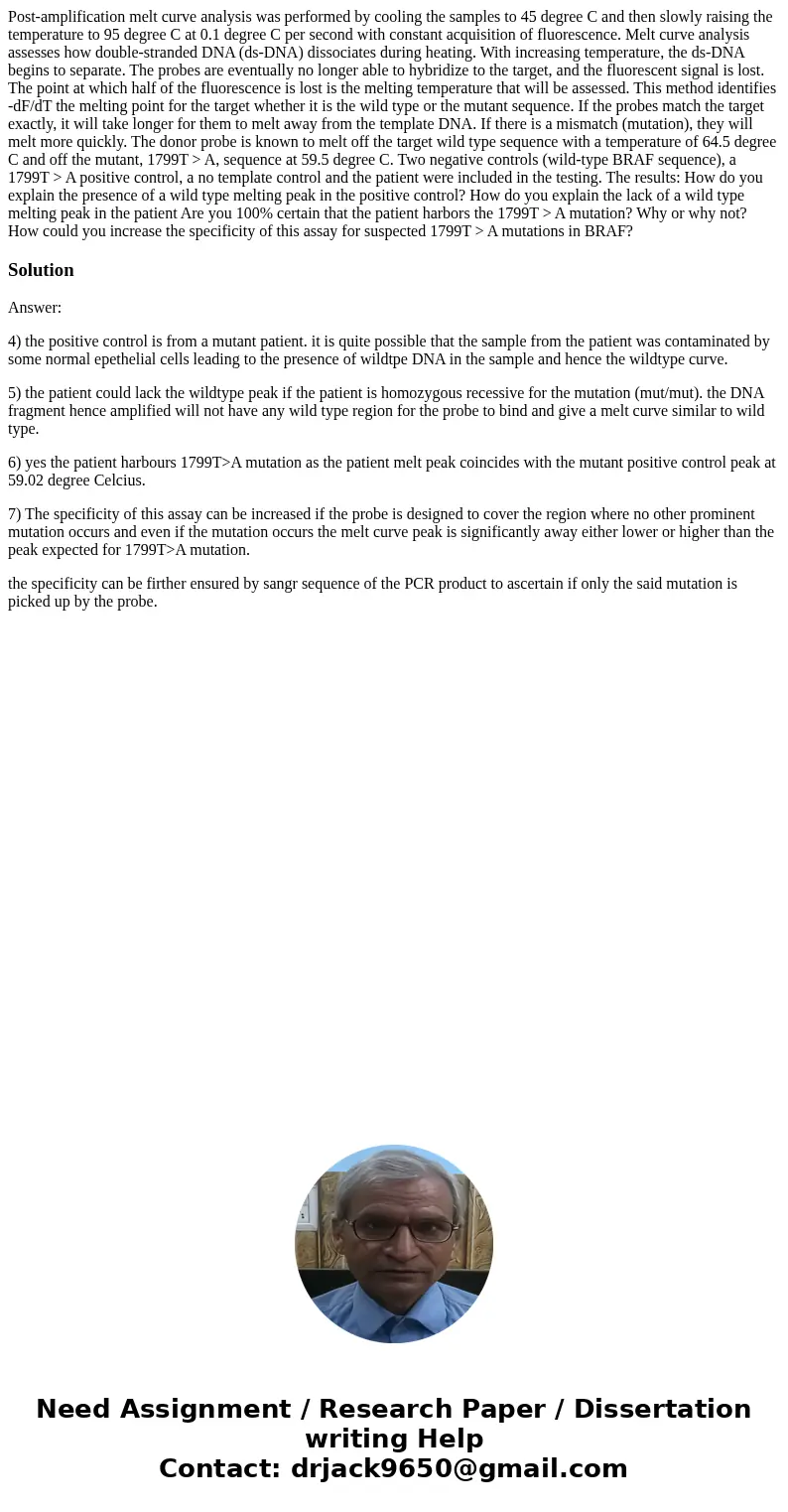Post-amplification melt curve analysis was performed by cooling the samples to 45 degree C and then slowly raising the temperature to 95 degree C at 0.1 degree C per second with constant acquisition of fluorescence. Melt curve analysis assesses how double-stranded DNA (ds-DNA) dissociates during heating. With increasing temperature, the ds-DNA begins to separate. The probes are eventually no longer able to hybridize to the target, and the fluorescent signal is lost. The point at which half of the fluorescence is lost is the melting temperature that will be assessed. This method identifies -dF/dT the melting point for the target whether it is the wild type or the mutant sequence. If the probes match the target exactly, it will take longer for them to melt away from the template DNA. If there is a mismatch (mutation), they will melt more quickly. The donor probe is known to melt off the target wild type sequence with a temperature of 64.5 degree C and off the mutant, 1799T > A, sequence at 59.5 degree C. Two negative controls (wild-type BRAF sequence), a 1799T > A positive control, a no template control and the patient were included in the testing. The results: How do you explain the presence of a wild type melting peak in the positive control? How do you explain the lack of a wild type melting peak in the patient Are you 100% certain that the patient harbors the 1799T > A mutation? Why or why not? How could you increase the specificity of this assay for suspected 1799T > A mutations in BRAF?
Answer:
4) the positive control is from a mutant patient. it is quite possible that the sample from the patient was contaminated by some normal epethelial cells leading to the presence of wildtpe DNA in the sample and hence the wildtype curve.
5) the patient could lack the wildtype peak if the patient is homozygous recessive for the mutation (mut/mut). the DNA fragment hence amplified will not have any wild type region for the probe to bind and give a melt curve similar to wild type.
6) yes the patient harbours 1799T>A mutation as the patient melt peak coincides with the mutant positive control peak at 59.02 degree Celcius.
7) The specificity of this assay can be increased if the probe is designed to cover the region where no other prominent mutation occurs and even if the mutation occurs the melt curve peak is significantly away either lower or higher than the peak expected for 1799T>A mutation.
the specificity can be firther ensured by sangr sequence of the PCR product to ascertain if only the said mutation is picked up by the probe.

 Homework Sourse
Homework Sourse